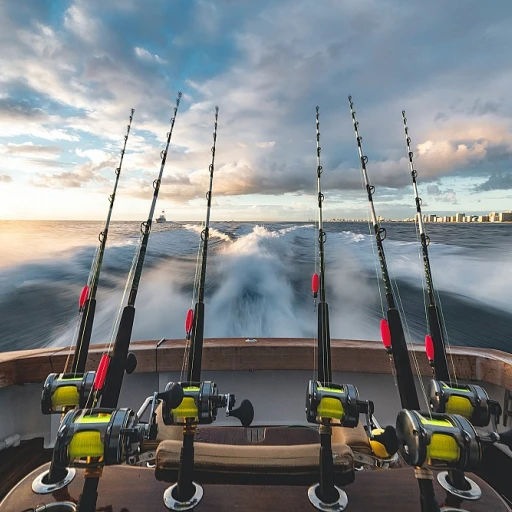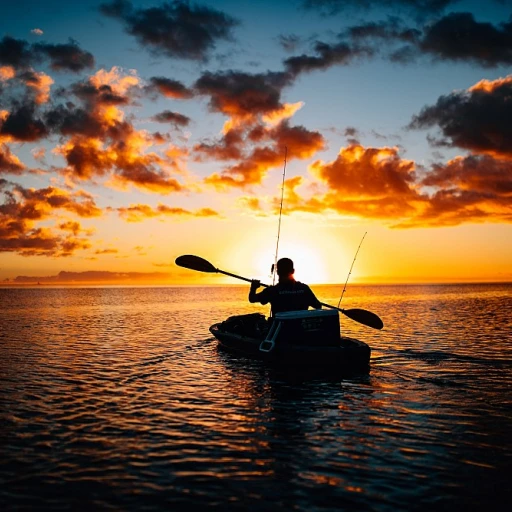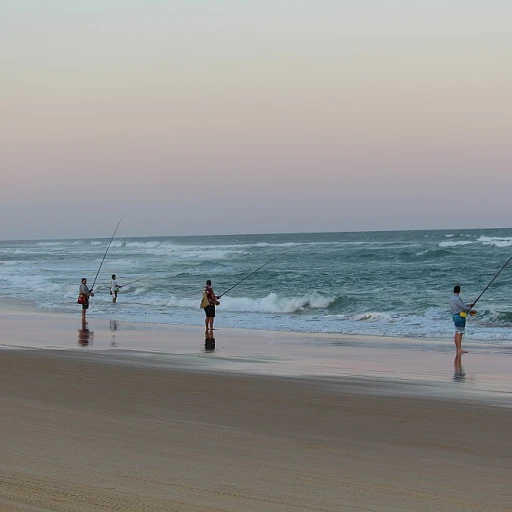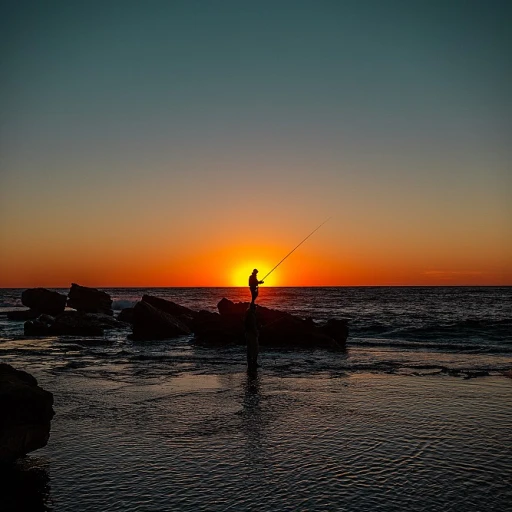Understanding Boundary Water Fishing
Exploring the Unique Challenges of Boundary Water Fishing
Boundary water fishing presents a unique set of challenges and opportunities for anglers seeking to catch species like northern pike, lake trout, and smallmouth bass. The Boundary Waters Canoe Area (BWCA) is renowned for its pristine lakes and rivers, offering a serene backdrop for fishing enthusiasts. However, the remote and often rugged terrain requires anglers to be well-prepared and knowledgeable about their fishing gear, especially when it comes to selecting the right fishing line.
Fishing in these waters involves navigating through a mix of clear and murky conditions, varying depths, and diverse fish species. This makes the choice of fishing line crucial. While some anglers prefer mono or fluorocarbon lines for their flexibility and invisibility in water, others opt for braided line due to its strength and sensitivity. Each type of line has its own set of advantages and challenges, which we'll explore in more detail.
Understanding the dynamics of fishing in boundary waters is key to a successful angling experience. From the type of rod and reel to the choice of live bait or lures, every element plays a role in how effectively you can catch fish in these waters. Additionally, mastering the art of leader lines can enhance your fishing experience, providing the necessary balance between strength and stealth. For more insights on this topic, you can learn more about leader lines and how they can improve your setup.
The Advantages of Braided Line
Unleashing Your Potential with Advanced Technology
Braided lines are nothing short of revolutionary for those venturing into the diverse waters of boundary lakes and rivers. Their construction comprises multiple strands woven tightly together, creating a discernibly thinner diameter compared to traditional monofilament lines. This structural innovation provides a host of advantages eagerly sought by many anglers. Primarily, the thin diameter of braided line enhances casting distance significantly. Imagine fishing for lake trout or smallmouth bass in expansive boundary waters; a longer casting range can make all the difference. It allows you to reach areas that might be inaccessible with other types of fishing lines, thereby increasing your chances of hooking that elusive fish. This benefit is particularly impactful when targeting pike and northern pike, as these fish are often found lurking in deeper sections of the lake. Moreover, braided lines excel in their ability to transmit sensitivity from the lure to the rod. When paired with a suitable spinning rod and reel, anglers can detect even the most subtle bites, making it easier to distinguish between a strike and the natural underwater currents. This heightened sensitivity is invaluable when fishing for top-tier bass species or during ice fishing expeditions. Another major advantage is the line's superior durability and resistance to abrasions. This is a crucial feature when fishing boundary waters abundant with underwater obstacles like rocks, logs, and dense vegetation. The extra toughness ensures that the line remains intact even when battling a vigorous smallmouth bass. For those concerned with line visibility, combining braided line with a fluorocarbon leader creates an effective solution. The leader remains invisible to the fish while the braid delivers superior performance and strength. If you're looking for an in-depth guide on making the right choice of fishing line, you can dive deeper into the importance of fishing line choices. This knowledge could be instrumental in your next fishing boundary excursion. Despite its advantages, it's essential to consider how braided line compares to alternatives like mono and the conditions it best complements. As you read onward, you'll gain insights into potential challenges and strategic tips for leveraging braided line effectively on the water.Potential Challenges with Braided Line
Challenges Anglers Face with Braided Line
Braided line is often lauded for its strength and durability when fishing in the Boundary Waters. However, anglers may encounter a few challenges that could affect their fishing experience. Firstly, the visibility of braided lines in clear waters can be a concern. Fish like lake trout and northern pike in these pristine environments can be spooked by visible lines, making it harder to get a bite. This is especially true when targeting wary species in well-traveled BWCA lakes. To counteract this issue, many anglers use a fluorocarbon leader, which is less visible underwater, to connect the braids to their lures. Secondly, braided lines can sometimes struggle with knot slippage. Due to their slick surface, certain knots may not hold as well when tied with braided line compared to mono or fluorocarbon. This can be mitigated by using specific knots known for their reliability with braid, such as the Palomar or Double Uni knot. Another potential challenge is the compatibility with spinning reels. While strong and sensitive, braided line tends to occasionally wrap around the rod tip or dig into itself on the spool during retrieval. Careful spooling techniques and regular line maintenance can help reduce these issues, ensuring smooth handling with your spinning rod. Lastly, braided lines are less abrasion-resistant than other fishing lines like mono when dragged across rocks or stumps found in lake bottoms. This makes them more susceptible to fraying or snapping in such environments. Managing line contact or using a heavier braid can help address this concern, but anglers should remain vigilant of their surroundings. If you’re considering braided lines for your next Boundary Waters trip, it might be helpful to explore some rod protection options. For more information about choosing a rod case, check out this essential guide to choosing a fishing rod hard case. It provides valuable insights on keeping your equipment safe, ensuring your gear is ready for your next fishing adventure.Comparing Braided Line to Other Fishing Lines
Evaluating Different Fishing Line Options
When it comes to fishing in the boundary waters, choosing the right line is key to a successful day on the lake. Anglers have a variety of options, but braided line and mono fishing line are some of the top contenders. Each has its advantages and unique characteristics that cater to different fishing techniques and species.
Mono line advantages include its elasticity and stretch, making it ideal for smallmouth bass fishing with live bait. The stretch can help in situations where a more flexible approach is needed, reducing the chances of fish shaking off the hook. Mono also tends to be more affordable than braid, a factor to consider when planning your fishing budget.
However, braided line often comes out on top in terms of strength-to-diameter ratio. This quality allows anglers to spool more line onto their spinning reels, which is a distinct advantage when targeting species like northern pike and lake trout in the bwca waters. The lack of stretch makes braided line incredibly sensitive, providing a certain edge when detecting bites while trolling or casting with your spinning rod.
But the decision isn't always straightforward. Some anglers prefer fluorocarbon leader lines in combination with their braid to enhance the presentation and improve abrasion resistance on the rockier lake bottoms you'll often encounter while fishing the boundary waters. This combination offers a strategic advantage for targeting elusive species, such as lake trout and bottom-dwelling smallmouth bass.
It's worth noting that the choice between braided and mono isn't about picking one over the other; it's about using each to its strengths depending on the situation and target fish. As you gear up with your rod and reel to explore fishing boundary waters, weigh the pros and cons of each line based on your specific needs.
Tips for Using Braided Line Effectively
Maximizing Success with Braided Line
Using braided line in the boundary waters offers some unique advantages, but it also requires a bit of technique to truly maximize its potential. Whether you're targeting northern pike, lake trout, or smallmouth bass, understanding the nuances of this line type will ensure a more successful fishing experience.
- Knot Strength: With braid, knot strength becomes crucial given its slick surface. Techniques such as the Palomar or double uni knot can be more effective for securing hooks and lures. Practice these loops to prevent losing that trophy fish.
- Adding a Leader: Since braided line can be highly visible in clear water, it's advisable to use a fluorocarbon leader to increase invisibility to fish. This will help you stay invisible to bass or trout lurking beneath that clear lake surface.
- Adjusting Drag System: As we explored previously, braid offers zero stretch, meaning your drag system on the spinning reels or rod reel setup needs to be adjusted more finely. A subtle drag reduces the chance of the line snapping if a fish makes a sudden run.
- Line Management: Different than other fishing lines like mono, braid is thinner and can form wind knots quite easily. Regularly checking your line on the reel and ensuring proper casting methods will aid in minimizing these tangles.
- Pairing with the Right Rod: Opt for a spinning rod or a top rod designed to work with braid. This combination with a compatible setup will help you make the most of your casts and retrievals, enhancing your overall fishing boundary experience.
As you experiment with these techniques, remember that practice is key in fishing. Each time you cast out into those pristine waters of the boundary, you're honing your skills for better catches. Consider subscribing to a dedicated fishing thread or read up more on individual species strategies for further insights, especially when targeting diverse species like bass and pike smallmouth in these unique ecosystems.

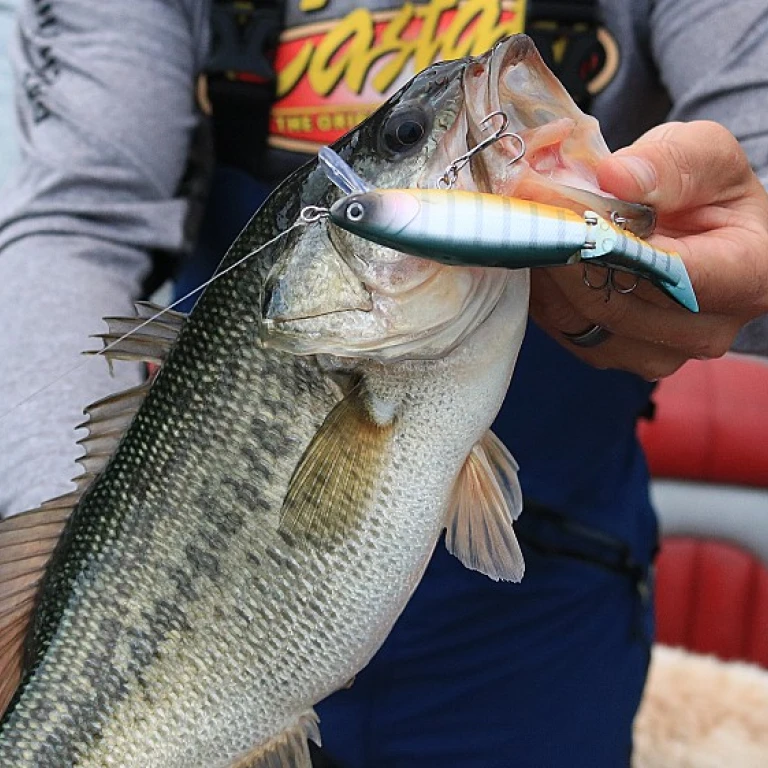
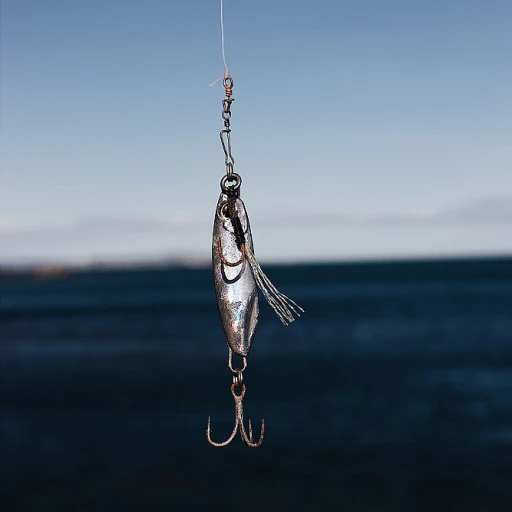


-large-teaser.webp)
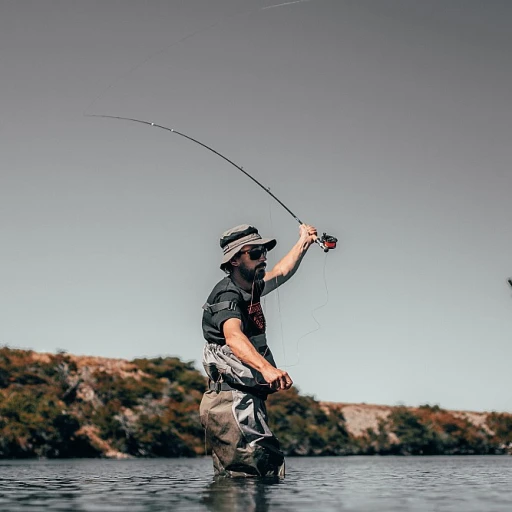
-large-teaser.webp)

